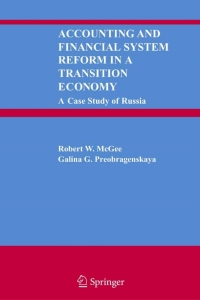Question
Due to significant changes to the financial environment in one of the main Omegas markets it is expected that the average collection period will increase

 Due to significant changes to the financial environment in one of the main Omegas markets it is expected that the average collection period will increase to 50 days. Omega is in the process of negotiating a long-term loan and the CFO is concerned on the credit outlook of the company. The CFO has decided to reduce cash and cash equivalents to 400,000. However, further actions are needed. You are asked to examine two extreme what-if scenarios to help the CFO decide the future financial policy of Omega. The first is to decrease inventories, and the other is to hold back Omegas payments by increasing the accounts payable. Assume all other amounts as the same.
Due to significant changes to the financial environment in one of the main Omegas markets it is expected that the average collection period will increase to 50 days. Omega is in the process of negotiating a long-term loan and the CFO is concerned on the credit outlook of the company. The CFO has decided to reduce cash and cash equivalents to 400,000. However, further actions are needed. You are asked to examine two extreme what-if scenarios to help the CFO decide the future financial policy of Omega. The first is to decrease inventories, and the other is to hold back Omegas payments by increasing the accounts payable. Assume all other amounts as the same.
Required: 1. Calculate the impact on accounts receivables of the increase of the average collection period . 2. Prepare the balanced sheet of each scenario, also taking into account the reduction in cash and cash equivalents. Please prefer to report them in comparative form 3. Calculate for each scenario the a) working capital, b) current ratio, c) acid-test ratio, d) cash to current liabilities ratio, e) days sales in receivables (based on ending accounts receivables), f) days sales in inventory (based on ending inventory), g) operating cycle, h) total debt to equity ratio and i) times interest earned. For your calculations, assume that a year amounts for 360 days . 4. Based on your calculations advice on which scenario should be given emphasis and justify your position. In your report include the practical implications of each ratio, and on the potential changes of each but avoid giving definitions (about 300 words)
The balance sheet and the income statement of Omega Company containing data in is as follows: Balance Sheet 20X1 Assets Fixed assets: Property, plant and equipment Less accumulated depreciation Net property, plant and equipment Total fixed assets 5,500,000 1,075,000 6,575,000 Current assets: 44EUL 3,500,000 20X1 Liabilities & Stockholders' Equity Stockholders' equity: 11,000,000 Common stock (3,925,000) Retained earnings 7,075,000 Total stockholders' equity 7,075,000 Long - term liabilities: Long-term debt 700,000 Total long-term liabilities 800.000 Current liabilities: 1,650,000 Accounts payable 2,100,000 Short-term debt 750,000 Total current liabilities 6,000,000 Total liabilities Total liabilities & stockholders' equity 13,075,000 3,500,000 Cash and cash equivalents Marketable securities Accounts receivables Inventory Prepaid expenses Total current assets 700,000 2,300,000 3,000,000 6,500,000 Total assets 13,075,000 17,499,600 (13,000,000) 4.499,600 Income Statement 20X1 Sales Cost of goods Gross margin Selling and administrative expenses Net operating income Interest expense Income before taxes Income taxes (25%) Net income (3,599,600) 900,000 (400,000 500,000 (125,000) 375,000Step by Step Solution
There are 3 Steps involved in it
Step: 1

Get Instant Access to Expert-Tailored Solutions
See step-by-step solutions with expert insights and AI powered tools for academic success
Step: 2

Step: 3

Ace Your Homework with AI
Get the answers you need in no time with our AI-driven, step-by-step assistance
Get Started


